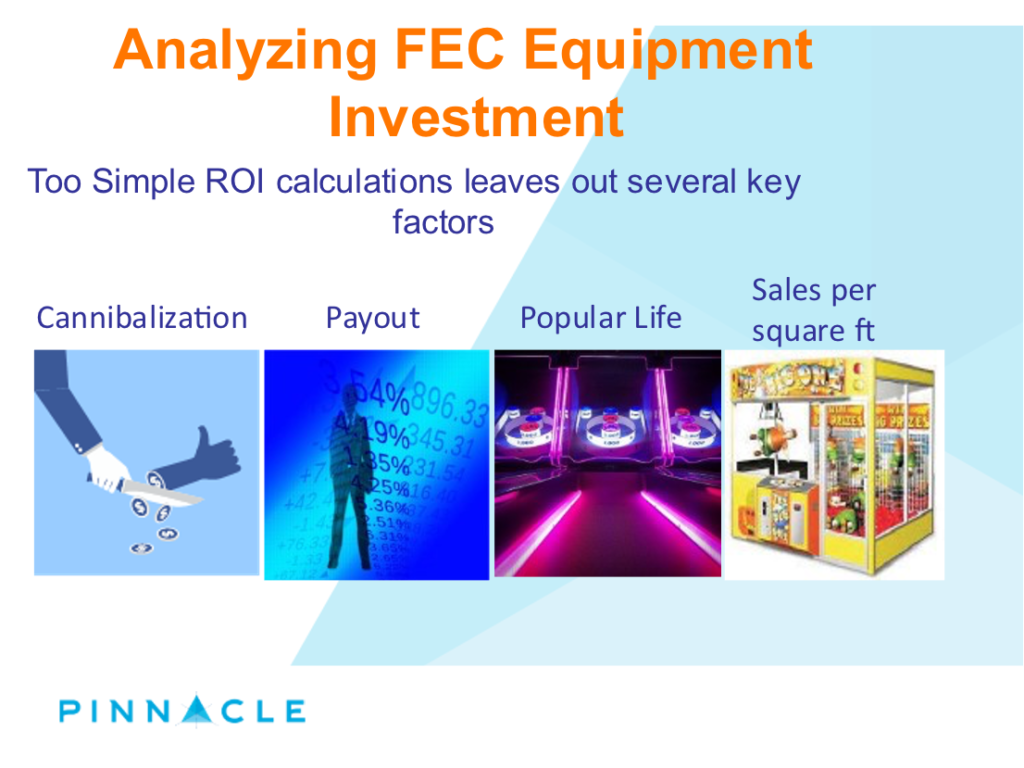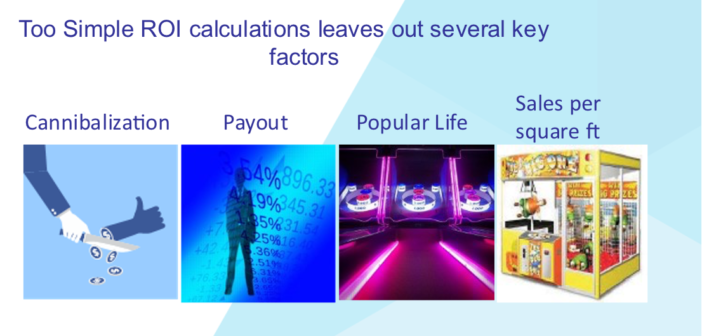Back in Business!!!
Digging Deeper to Make Better Buying Decisions

George McAuliffe
By George McAuliffe, President, Pinnacle Entertainment Group
As the U.S. economy reopens, it’s both a relief and a blessing to see the players flocking back to FECs. Years ago, I remember meeting with a real estate broker for a shopping center in Connecticut. It was just after one of several recessions in the 1980s. He had a bumper sticker on his briefcase that read, “Lord, give me one more real estate boom and I promise I won’t spend all the money this time.”
In the depths of the Covid crisis, we heard a common refrain from our clients: “We’ve been able to survive. We’ve learned how loose we were with our expense dollars. We’ve tightened up and when we come back, we’ll be in position to be much more profitable.” Well, we are pretty much back. Are you putting those lessons to work?
There’s no better place for cost discipline than at a trade show. Tens of millions of dollars are spent on games and attractions in our industry with only the most basic cost-benefit analysis applied to the process. Buying games because we “like” them is the chief culprit. And the worst of all is the “payback” calculation.

Analyzing Game Purchases
Accountants don’t understand the way we use the term “payback” in our world. True payback is far more complicated than cost divided by sales. We don’t get our investment back in ten weeks on a game costing $10,000 that earns $1,000 per week.
• Cost to Purchase: There’s a wide range of game cost. Sales performance must be weighed against that cost.
• Operating Cost-Payout: With target payouts ranging from 10 to 30%, the net sales after payout should be the measurement on the sales side.
• Physical Size: Space in most FECs is limited and each square foot has value. Sales-per-square-foot must be part of the equation.
• Price Per Play: Really? Why? Price per play can have a tremendous effect on the guest value perception. If Game A generates the same sales as Game B at half the price per play, it’s much more attractive in the guest’s eyes.
• Longevity: An average game that stays average over time will outperform a game that starts strong, but drops quickly to average, if it has a distinct audience. Think Skee-Ball and basketballs. Games that starts strong and drop, without a dedicated audience, are probably just trading sales with other games.
Cannibalization & Its Opposite: Incremental Sales
This may be the most overlooked factor in game sales performance. Simply put, that new game you just put in that did $2,000 that first week? It didn’t do $2,000 that first week! Much of its sales was “cannibalized” from other games. In other words, if the new game never arrived, your arcade would still have collected most of those sales. The best way to measure the true sales effect of new games is measuring the net effect on the entire game room. That gets complicated.
Incremental sales are the Holy Grail of FEC management. It means we achieved one of three things by purchasing that new game or attraction:
• Got people to stay longer.
• Motivated them to spend more money.
• Attracted new customers.
• Improved business in a given part of the day (think adding bowling to an FEC).
What About Attractions?
It is especially important to apply the same philosophy to analyzing attraction performance. Talk about a wide variance! Compare bowling to the Hologate virtual reality system and you’ll be comparing 14,000 square feet to 400 square feet. Of course, that is just one factor of several. It takes work to cut through the camouflage.
• Capacity: We always divide the cost of an attraction by its ”seats” or number of guests served per “ride.” We define “seats” and “ride” loosely. Each of Hologate VR’s four headsets equal a seat; each game equals a ride. A bowling lane has four seats, each game of bowling a ride. In laser tag, a vest equals a seat. You get the idea.
• Throughput: How many “rides” per hour times the number of “seats.” This can be affected by things like vesting or briefing time, safety checks and the exit process.
• Price Per Play: Just as with games, price per play can have a huge impact on guest experience. Attractions are able to generate much higher levels of spending than games (certainly more than individual games).
• Labor: Many attractions require dedicated labor and the cost of that labor relative to sales generated should, of course, be calculated!
Cannibalization is a factor when evaluating attractions as well. When analyzing high-tech attractions like VR, they are in danger of being compared to games. However, the intensity of most VR experiences place it squarely in the attraction category.
Attractions like Hologate don’t cannibalize the game room (based on reliable reporting from clients). We find that others, particularly the less expensive, smaller footprint models that more closely resemble games, do. (We call these “hybrids” since they fall somewhere between an attraction and a game.) It doesn’t mean they don’t belong. LAI’s VR Rabbids, for example, has been a great piece and Triotech’s Storm as well. But, they do cannibalize some of their sales. Keep the calculation going, though, because since they are unattended, they also offset labor.
Don’t get me wrong, we’re looking forward to seeing what the manufacturers have created. Our industry needs good product to keep the momentum going! We just need to do our homework and consider all the factors so we can make good buying decisions. We hope to see you at the shows!
George McAuliffe has helped hundreds of businesses large and small develop and execute arcades and FECs. He has personally operated family entertainment centers from 2,000 to 150,000 square feet as a corporate executive, entrepreneur and consultant. He is the owner, with his partner and son Howard, of Pinnacle Entertainment Group.
George lives on the Jersey Shore with his wife, Julie. They have three sons, two daughters-in-law and a grandson.
Readers can learn more about Pinnacle at grouppinnacle.com or contact George at [email protected]; phone: 314-422-7197.




